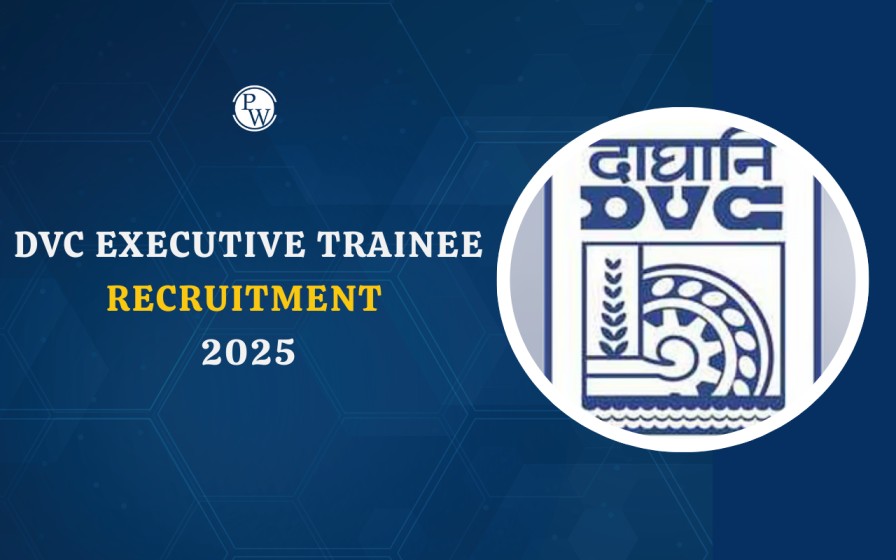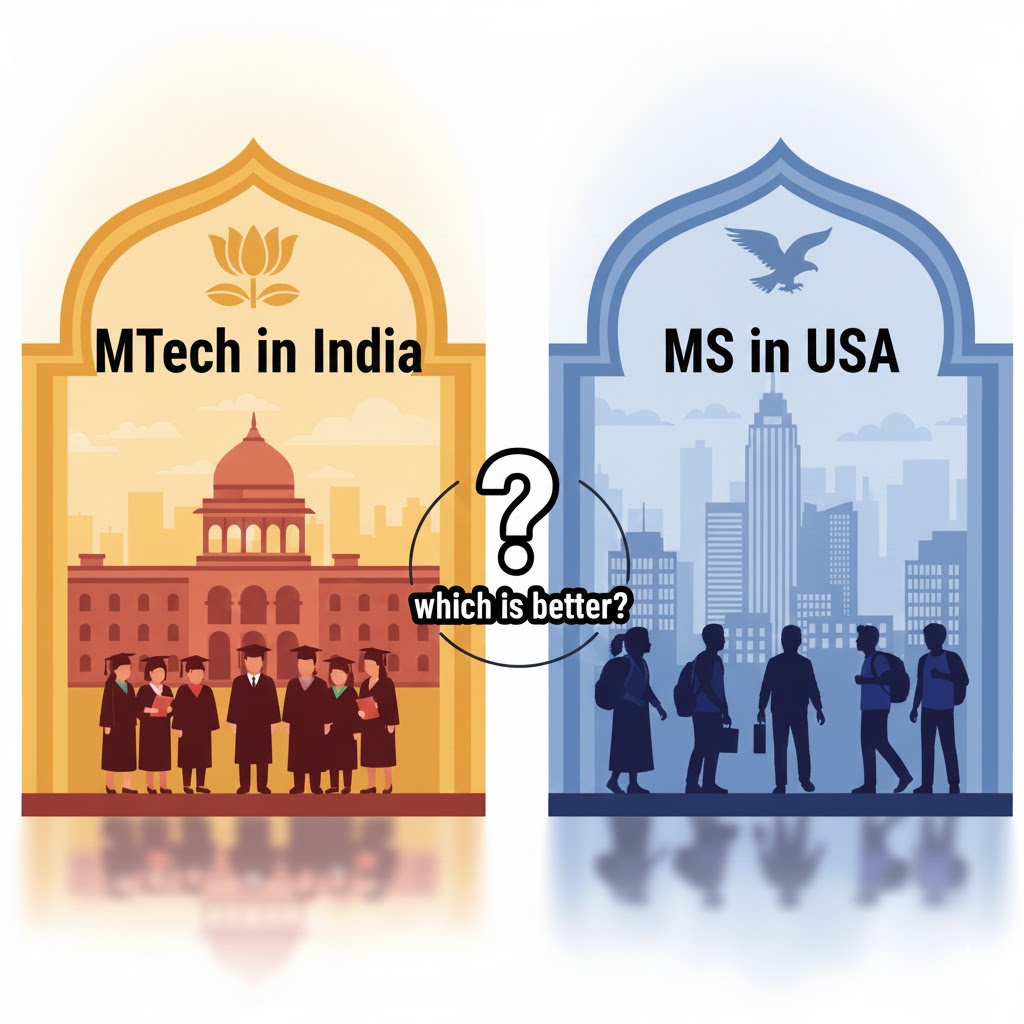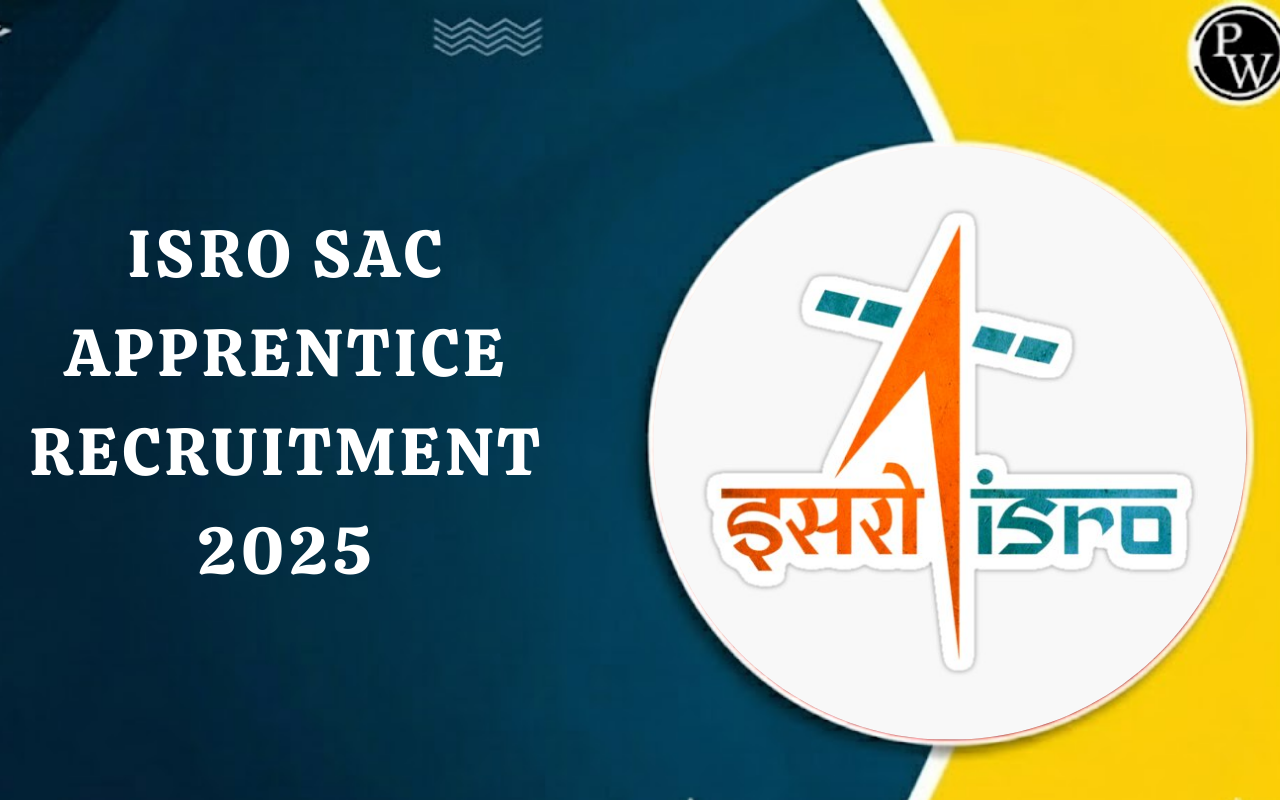
IAS, IES, and PSU are three prominent choices that attract a wide number of government job aspirants. All three of these are highly prestigious and competitive jobs, so it becomes challenging to settle for one. While IAS, IES, and PSU all provide government employment with job security and benefits, they differ from each other in various aspects.
Moreover, in order to land IAS (Indian Administrative Services), IES (Indian Engineering Services), or PSU jobs, also known as Public Sector Undertakings, candidates need to clear multiple stages of examinations. This article aims to explore the characteristics of these three career choices, comparing their salary structures, benefits, lifestyles, and expectations versus the realities associated with each.
Understanding Differences Between the IAS, IES, and PSU Eligibility Criteria
Understanding the eligibility criteria for the IAS , IES, and PSU examinations is vital for individuals interested in pursuing these career paths because it provides an easy-to-understand overview of the educational qualifications, age limits, and other pertinent information required for appearing in the IAS, IES, or PSU recruitment .
Furthermore, by comprehending these factors, candidates may be able to identify the examination that most accurately matches their qualifications and interests. Let’s take a look at them.
| Comparison of IAS, IES, and PSU Eligibility (General) | ||
| Particulars | Age Limit | Educational Qualification |
| PSU |
|
Majority seats for Engineering (some available for others) |
| ISE (Engineering Services) |
|
Engineering degree |
| IAS (Civil services) |
|
Graduation from any recognized university |
While it may seem that mostly engineering students are best suited for IES or PSU jobs , there are various IAS vacancies for graduates in any discipline. Moreover, the minimum age limit for these examinations is 21 years, which means aspirants can start applying right after completing their bachelor's.
Additionally, the selection process for IAS and IES is somewhat similar, as both have prelims and mains followed by an interview. However, for PSU jobs such as ISRO, it has 2 stages: a single written exam and an interview.
IAS, IES, and PSU Exam Pattern Key Distinctions
While all IAS and IES have three stages prelims, mains, and interview as their selection process, PSU has just two: a written exam followed by an interview. Keep reading to learn more about the exam patterns of all three.
PSU Exam Pattern
It’s true that the PSU conducts its own examination; however, some of the Indian PSUs shortlist the applicants through the GATE exam, as listed below.
| PSU Recruitment with GATE | Without GATE exam |
| IOCL | ISRO |
| ONGC | NIELIT |
| PGCIL | HAL |
| NTPC | AAI |
It is important to note that there are more than 100 PSUs in India, and these are just a few examples to help candidates understand the exam pattern for PSU jobs .
| PSU Recruitment Exam Pattern | |
| Particulars | Details |
| Total number of questions | 150-200 |
| Exam duration | 2-2 ½ hours |
| Negative marking | ⅓ mark |
| Technical questions | 70% to 80 % of total questions |
| English and General aptitude | Approx. 20-30% of total questions |
| Question types | MCQ, MSQ, NAT |
While the written examination for PSU recruitment is qualifying in nature, the interview determines the selection of the candidates.
ISE Exam Pattern
The ISE exam is generally divided into two segments, technical and non-technical, also known as General Ability. Moreover, the selection process will include prelims, mains, and interviews.
| Paper name | Time duration | Questions | Marks | |
| Prelims | Paper-1 (General Studies and Engineering Aptitude) | 2 hours | 100 | 200 |
| Paper- 2 (Respective Engineering Branch) | 3 hours | 300 | ||
Furthermore, participants will have approximately six months between the IES preliminary and the IES mains, giving them ample time to master the remaining examinations.
| ISE Mains | ||||
| Paper | Subject | No. of Questions | Marks | Exam duration |
| Paper I | Engineering subjects | 5 out of 8 | 300 | 3 hours |
| Paper II | 300 | 3 hours | ||
After clearing both the examinations, selected individuals will be invited for the final round, which is an interview carrying 200 marks in total.
IAS or Civil Services Exam Pattern
IAS is a part of Civil Services, which includes two papers in the preliminary stage related solely to General Studies.
| Paper | Questions | Marks | Time | |
| Prelims | Paper I: General Studies | 100 | 200 | 2 hours |
| Paper II: General Studies II (CSAT) | 80 | 200 | 2 hours | |
Both of these papers will include objective-type questions and the marks from Paper I will be applied to determine the cut off. CSAT (Paper II) marks, on the other hand, must be 33% in order to qualify.
| Paper | Marks | Time | Nature of paper | |
| Mains | Paper A (Mandatory Indian Language) | 300 | 3 hours | Qualifying |
| Paper B (English) | 300 | 3 hours | ||
| Paper I (Essay) | 250 | 3 hours | Merit | |
| Paper II (GS I) | 250 | 3 hours | ||
| Paper III (GS II) | 250 | 3 hours | ||
| Paper IV (GS III) | 250 | 3 hours | ||
| Paper V (GS IV) | 250 | 3 hours | ||
| Paper VI (Optional 1) | 250 | 3 hours | ||
| Paper VII (Optional 2) | 250 | 3 hours | ||
Furthermore, all IAS mains papers are descriptive and mostly focus on English and General studies. As a result, it is critical to properly examine the IAS syllabus in order to identify the important areas.
The last stage is an interview that aims to evaluate the personality and knowledge of the selected candidates and carries 275 marks.
Various Departments of the IAS, IES, and PSU
Within IAS , IES , and PSU , there are numerous departments where candidates can get a job after successfully passing the examinations. Some of the most demanding departments are mentioned below.
Some of the Top PSU
- ONGC (Oil and Natural Gas Corporation Limited)
- CIL (Coal India Limited)
- PGCIL (Power Grid Corporation of India)
- NTPC (National Thermal Power Corporation)
- GAIL (Gas Authority of India Limited)
- PFCL (Power Finance Corporation Limited)
- NCL (Northern CoalFields)
- REC (Rural Electrification Corporation)
- NPCIL (Nuclear Power Corporation of India Ltd)
IES Departments
- Civil Department: Central Water Engineering Service, Indian Ordnance Factories Services, AEE in Border Road Engineering Services GR-A
- Mechanical Department: Indian Inspection Service Group A, Indian Naval Armament Service, etc.
- Electrical Department: Central Power Engineering Service, Indian Defence Service of Engineers, etc.
- Electronics: Indian Telecom Service Group-A, etc.
IAS Departments
- All India Civil Services: IAS, IPS, and IFos.
- Group A Civil Services: IFS, ICAS, IDAS, IIS, IOFS, etc.
Apart from these, there are many other departments where candidates can grow their career and become successful. In order to learn in-depth details regarding these examinations, applicants can visit Physics Wallah website directly.
Salary Comparison Between IAS, IES, and PSU
Aspirants will be able to make more educated choices about their chosen career routes when they know the information regarding the salary structures of various career alternatives, such as the IAS, IES, and PSU.
Moreover, it helps them gain a better understanding of the financial benefits associated with each option and determining whether those benefits satisfy their expectations and financial goals. To know the detailed salary structure of IAS, IES, and PSU jobs, refer to the table below.
PSU Salary Structure
The maximum a candidate can earn under PSU jobs such as ONGC and PGCIL is approx. INR 1,23,000 after tax or other deductions. However, the salary structure differs from department to department and post to post.
| PSU Salary Structure | ||
| Organization | Status | Salary Structure/ per month |
| ONGC | Maharatna | Rs. 60,000 to 1,80,000 |
| IOCL | Maharatna | Rs. 60,000 to 1,80,000 |
| NTPC | Maharatna | Rs. 60,000 to 1,80,000 |
| CIL | Maharatna | Rs. 60,000 to 1,80,000 |
| SAIL | Maharatna | Rs. 60,000 to 1,80,000 |
| BPCL | Maharatna | Rs. 60,000 to 1,80,000 |
| GAIL | Maharatna | Rs. 60,000 to 1,80,000 |
| NLC | Navratna | Rs. 20600-3% to 46500 |
| PGCIL | Navratna | Rs. 60,000 to 1,80,000 |
On the other hand, for highly prestigious scientific jobs such as ISRO, DRDO, etc., the salary starts at approx. INR 65,000 to INR 84,000 per month. It increases over time, depending on the years of service and other factors.
In addition to the PSU salary, employees are eligible for numerous perks and benefits such as health insurance, a provident fund, gratuities, house loans, and other performance-based incentives.
IES Salary Structure
Under the 7th Pay Commission, IES employees, also classified as Scale "A" officers, have a pay band of INR 56,100 per month. This places their salary on par with that of other civil service officers. Moreover, over time, there has been a significant increase in the salary of IES officers because previously the in-hand salary used to be around INR 42,000, whereas now it is approximately INR 55,135 per month.
| Rank or Level | Service duration | Grade pay | Salary structure |
| Junior level | On Joining | INR 5400 | INR 15,600 – INR 39,100 |
| Senior Scale | 5 to 6 years of joining | INR 6600 | INR 15,600 – INR 39,100 |
| Junior Administrative Grade | Minimum 10 years | INR 7600 | INR 15,600 – INR 39,100 |
| Selection grade scale | 20 years and above | INR 8700 | INR 37,400 – INR 67,000 |
| (Chief Engineer L2 / Jt. G M) | - | - | - |
| Super time grade | - | INR 8700 | INR 37,400 – INR 67,000 |
| (Chief Engr. / Additional GM) | - | - | - |
| Cabinet Secretary Grade | Fixed | N/A | INR 90,000 |
| Apex Pay Scale | Fixed | N/A | INR 80,000 |
IAS Salary Structure
When it comes to an IAS officer, their basic salary starts at INR 56,100, which doesn't include DA, TA, and HRA. The salary can go up to INR 2,50,000 per month at the post of Cabinet Secretary of India. Additionally, the gross monthly IAS salary differs from state to state and district to district.
| Level | Basic Pay | IAS Salary Range |
| Entry-level (initial salary) | INR 56,100 | Ranging from INR 56,100 to INR 1,32,000 |
| Maximum Pay (at Cabinet Secretary Level) | INR 2,50,000 | INR 2,50,000 |
The salary structure for IAS, IES, and PSU employees is fairly decent and competitive. It also comes with additional bonuses and perks. As a result, aspiring candidates can consider these particulars before making their decision.
Lifestyle Comparison Between IAS, IES, and PSU
Understanding the lifestyle that comes with IAS , IES , and PSU jobs allows applicants to make better-informed decisions regarding their future. It allows them to determine whether the lifestyle is compatible with their personal preferences, values, and long-term goals.
Furthermore, the lifestyle aspect may have a direct impact on the candidates' physical and emotional well-being. Take a look at the lifestyle associated with IAS, PSU, and IES jobs.
| Aspect | PSU Employees | IAS Officers | IES Officers |
| Nature of Job | Specific domains within the public sector | Administrative roles in the government | Engineering roles in the government |
| Work environment | Regular office hours, fixed responsibilities | Dynamic and challenging decision-making | Dynamic and challenging engineering projects |
| Salary and benefits | Fixed salary, medical insurance, and benefits | Higher pay scales, government accommodation | Higher pay scales, allowances, and benefits |
| Social Status | Comparatively lower social recognition | High administrative positions, prestigious | Respected position in the engineering field |
| Career Growth | Limited vertical growth opportunities | Greater prospects for career growth and promotions | Opportunities for growth within engineering |
| Job Security | Generally secure employment | Job security with pensions and post-retirement | Job security with pensions and benefits |
| Work-Life Balance | Fixed working hours, better balance | Demanding work schedules, frequent transfers | Demanding work schedules and project deadlines |
PSU jobs are best suited for anyone looking for a peaceful and less demanding lifestyle. In contrast, due to responsibilities such as supervising reports, guiding teams, and other supervisory duties, the lifestyle of IAS and IES officials becomes chaotic.
Expectations vs. Reality of IAS, IES, and PSU Jobs
Given that all three of them (IAS, IES, and PSU) are government jobs with long-term and secure employment, aspirants may have other expectations that differ from reality.
For instance, government jobs are considered less hectic and more peaceful as compared to those in the private sector. To some extent, this may be true; nonetheless, each job profile has its own unique set of roles and responsibilities.
| Particulars | Expectations | Reality |
| Salary | Decent pay scale | Varies; generally higher in IAS and IES compared to PSU |
| Work-Life Balance | Balanced working hours and weekends off | PSU: Usually balanced; IAS/IES: May have demanding schedules |
| Career Growth | Steady promotions and opportunities for advancement | PSU: Limited vertical growth; IAS/IES: Better prospects for growth |
| Job Security | Stable and secure employment | PSU, IAS, and IES: Generally high job security |
| Social Status | Respect and recognition as a government employee | IAS: Prestigious position, high social status; PSU and IES: Varies |
| Job Responsibilities | Specific roles within a domain | IAS: Broad administrative responsibilities; IES: Engineering work |
| Stress Levels | Moderate | PSU: Relatively lower; IAS/IES: Can be high depending on workload |
| Work Environment | Structured and hierarchical | PSU: Usually structured; IAS and IES: Dynamic and challenging |
| Job Location | Often within specific regions or cities | PSU, IAS, and IES: May involve transfers to different locations |
By now, aspirants can observe a few differences when comparing IAS, IES, and PSU jobs in terms of salary, benefits, and lifestyle. While all three are highly competitive and require extensive preparation, IAS and IES officers generally have higher salaries and better career growth opportunities, but their lifestyles can be more demanding.
On the other hand, PSU jobs offer stable employment and a balanced work-life balance. It's necessary for aspirants to carefully assess their expectations and the realities of these jobs and settle for the one that aligns with their long-term goals.
IAS, IES, and PSU Job Comparison FAQs
Q1. What is a PSU, exactly?
Q2. Which job among IAS, IES, and PSU provides better work-life balance?
Q3. Which is the highest-paid PSU job?
Q4. What is better, an IES or a PSU?









